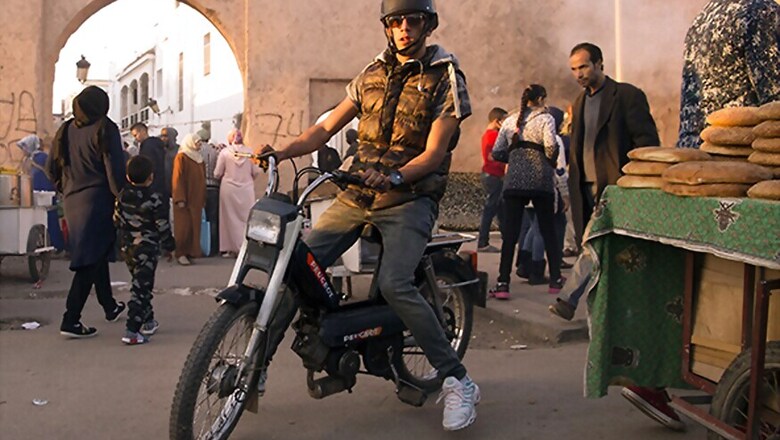
views
In France it slipped into legend after delighting long-haired teenagers in the seventies and eighties, but in Morocco the tireless moped spurts on despite an invasion of cheaper Chinese scooters.
The Peugeot 103 has been around for so long in the North African country that most Moroccans do not notice it.
But with its rounded handlebars, spluttering engine and signature exhaust cloud of blue smoke, the Peugeot 103 is to Morocco what the Renault 4L is to Madagascar: almost a national emblem.
"We adore the 103," says Mohammed Ngaire, a salesman at a used motorbike and moped market in the capital Rabat, showcasing the most beautiful specimens of the Peugeot 103 still in circulation.
"Come and see, we have them all," calls the 63-year-old, a popular character at the seaside venue who says he was once a "400-metre champion" in running.
"The Fox, named after its headlight that makes it look like a fox. The Ninja with its black coat and steel hubcaps. The safe Vogue, and the unmissable 103" Sport Prestige, he adds.
Passersby can also admire the Ramzey, a Turkey-made knockoff.
They can even find the antique "Motobecane", whose clumsy appearance and large saddlebags today inspire love in grandfathers France-wide.
That one's "a real Rolls Royce. When you have one, it's for life. But nowadays good deals are rare," Ngaire says.
The first models of the Peugeot 103 were made in France in 1971, intended for older people living in the countryside.
But the model caught on fast, overtaking its predecessors the 101 and 102, becoming a must-have among youth and blue-collar workers.
In Morocco, "they started arriving in the eighties," says a mechanic in central Rabat who gave his name as Habachi.
The model "became popular among the working class and low-ranking public servants," says the man in his fifties.
"Today it's become a bit outdated. But it's so solid, it still has a lot of followers."
Pimped mopeds
No permit is required to drive the moped, which can be spotted at virtually every street corner in Morocco.
They scoot around in all their legendary glory -- starting pedals, 49cm3 engine, miraculous petrol tank back-up, 45-kilometre-per-hour (28-mile-per-hour) speed limit and all.
Some models have been customised in new chrome colours.
But the must-have item is a special kit to boost the engine's carburator.
Urban legend has it that all thieves in the southern city of Marrakesh once pimped their mopeds like this, so police were ordered to arrest anyone riding one at more than 80 kilometres an hour.
In amateur videos shared online, moped fanatics from all over North Africa appear lying flat over their handlebars as they overtake cars at lightning speed on the motorway.
France stopped producing the 103 in 2011 and Morocco followed suit three years later when it shuttered its DIMAC-Peugeot plant in Casablanca.
Nostalgic moped lovers are now forced to make do with an obsolete if beautiful catalogue of seven models priced from 7,400 dirhams ($740) for the orange 103 Classic to 10,600 dirhams for a Fox with a pointy nose.
Fans can also sign up to a one-week road trip from Essaouira to Agadir along the Atlantic coast for "an adventure behind the handlebars of a moped... between friends", according to the French organisers.
But at the Rabat motorbike market, worries are high over a new arrival in town.
For about a decade, cheap Chinese scooters have invaded the country, says Ngaire, with "that aggressive look youth like so much".
The Asian two-wheelers zip all over the capital, but at the used bike market, vendors are unanimous.
"Chinese bikes work, but they're not quality. They're like disposable razors."



















Comments
0 comment